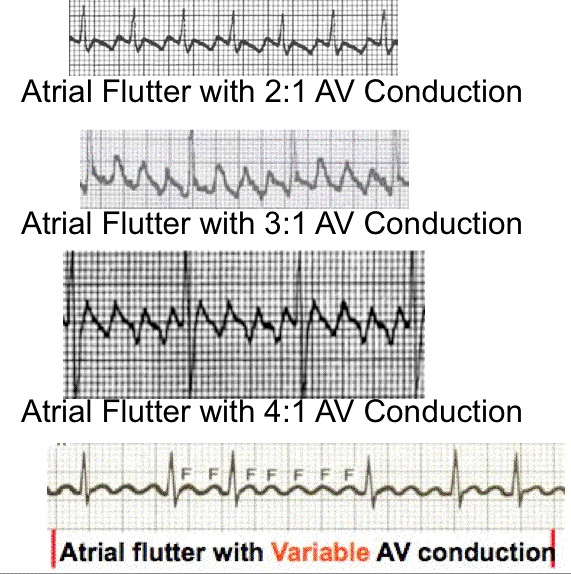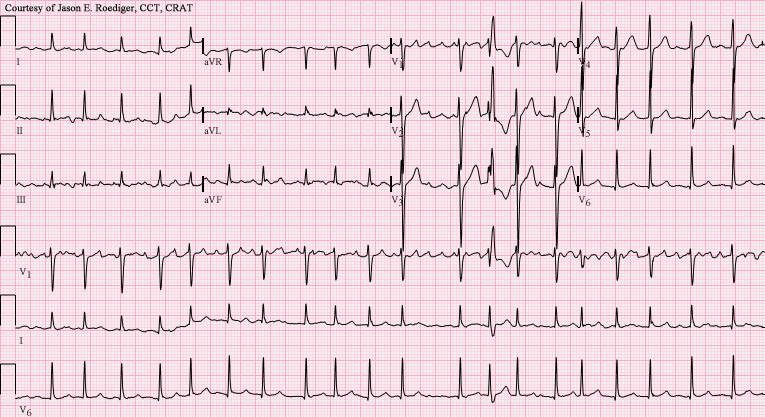
Several classes of medication can help slow your heart rate, including beta blockers, calcium channel blockers, and digoxin. Treatment of atrial flutter focuses on slowing the heart rate, reducing the risk of stroke, and converting the flutter to a normal rhythm driven by the sinus node. If an EKG shows that you have atrial flutter (shown by the "sawtooth" pattern), your doctor may also conduct an ultrasound of your heart ( echocardiogram) to evaluate your heart and spot any blood clots.

Diagnosis and TreatmentĪtrial flutter is diagnosed based on your medical and family history, a physical exam, and an EKG. These clots can travel to the brain and block an artery, causing a stroke or a cold arm or leg if, for example, the clots travel to a major artery in your limbs.Īlso, in people with atrial flutter, the ventricles don't completely fill with blood and may not pump enough blood to meet the body's needs, resulting in heart failure. Blood moves more slowly through the heart and may stagnate, allowing small blood clots to form. Some people don't experience any symptoms from atrial flutter.Īlthough the heart beats more rapidly in people with atrial flutter, it doesn't fully contract, and the atria don't empty completely into the ventricles.

The signal then travels to the atrioventricular node, near the center of the heart, where it is slowed down briefly (or pauses) to allow the ventricles to fill with blood.

This signal travels from the right atrium to the left atrium and tells both of these chambers to pump blood into the lower heart chambers (right and left ventricles). Normally, your heartbeat begins with an electrical signal that's sent out by the sinus node (or sinoatrial node), a group of cells located in the upper right heart chamber (right atrium).

The condition is similar to atrial fibrillation (afib) - the most common type of arrhythmia (abnormal heartbeat) - and it can cause similar symptoms and complications.Ītrial flutter is much less common than afib, and people with atrial flutter can also have episodes of afib. Atrial flutter is an abnormal, rapid heartbeat that produces a "sawtooth" pattern on an electrocardiogram.Ītrial flutter is a heart disorder in which the heart beats much faster than normal.


 0 kommentar(er)
0 kommentar(er)
